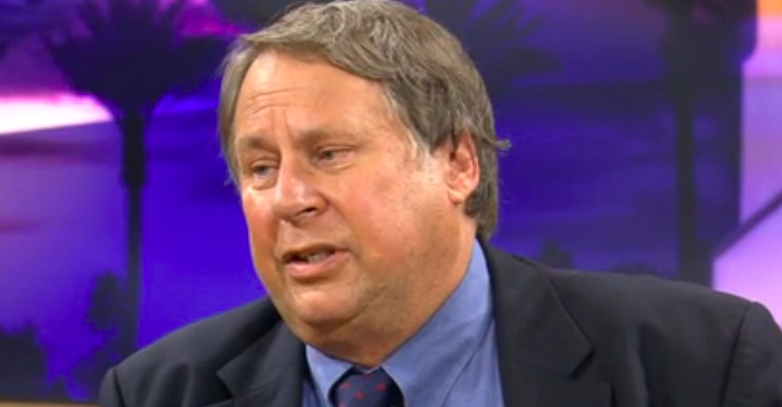By Jeffrey Waitkevich
Raymond Arsenault, a history professor at USF St. Petersburg, has finished writing the third and final book in his forgotten civil rights stories series, “Arthur Ashe: A Life.”
While Ashe wrote four autobiographies, “Arthur Ashe: A Life” will be the first full biography of the tennis legend. New York City-based publisher Simon & Schuster will publish the book on Aug. 1. It is also set to be unveiled during the 2018 U.S. Open at Arthur Ashe Stadium.
“Arthur Ashe: A Life” will join “Freedom Riders: 1961 and the Struggle for Racial Justice,” which was turned into a three-time Emmy-winning PBS documentary, and “The Sound of Freedom: Marian Anderson, the Lincoln Memorial and the Concert that Awakened America” a biography of singer Marian Anderson.
While writing the book, Arsenault worked closely with Ashe’s widow Jeanne and interviewed over 150 people, including tennis legends John McEnroe and Stan Smith.
“They’re all very willing to talk because they loved Ashe,” said Arsenault. “He was a beloved figure. Some of them break down crying saying, ‘he was the greatest person I’ve ever met in my lifetime’.”
Arsenault spent eight years writing the book. He battled through the passing of both of his parents and took a year off to reconsider whether he wanted to finish his latest project. His inspiration to persevere came from Ashe’s story.
“I thought if Arthur Ashe could do what he did, I could suck it up and do what I do, that he deserved it,” he said.
Ashe died of AIDS at 49 after he was given infected blood during an open-heart surgery. He grew up 40 feet from a tennis court, won an NCAA championship at UCLA, became the first black player in the Davis Cup and won the inaugural U.S. Open. Even so, Arsenault pointed to Ashe as a civil rights icon.
“He was more of a man of substance and courage than I ever could have imagined,” Arsenault said. “Very bright, an accomplished writer for the Washington Post. [He] wrote a three-volume history of black athletes. [He] picketed the White House for the rights of Haitian people, was arrested right before he died. [He] was an emaciated 128 lbs. but there he was.”
“A lot of what I’m writing about is not just the tennis…He did everything. He was like a renaissance man,” said Arsenault.
Trying to find a fitting title for the book proved difficult for Arsenault because of how important Ashe was. He considered what he called “cute titles,” but decided to save them for the chapter titles.
“I want to communicate his status as someone to be reckoned with,” said Arsenault. “There’s no one like him in the sports world — white or black…LeBron James, Kareem Abdul-Jabbar, Jackie Robinson [were close], but they were not writing biweekly article for the Washington Post or researching three-volume histories of blacks in sports or doing all the commenting on HBO and ABC or lecturing at Yale or teaching courses at Florida Memorial (University).”
Figuring out how to finish the book was also an unknown until former president Barack Obama spoke about Ashe and Muhammed Ali while giving a talk to students at North Carolina Agricultural and Technical State University in October 2016.
“They’re the ones who taught me what it meant to be a man,” Obama said.
The story of that talk is featured in the epilogue.
Arsenault is dedicating the book to his longtime friend and fellow civil rights activist Jim Horton, who passed away earlier this year.
He spoke of how tennis was a release for him and Horton while they attended Brandeis University.
“Jim really idolized him,” Arsenault said regarding Ashe. Horton and Ashe were both born in 1943, stood at 6 foot 1inch tall, and weighed 155 lbs.
Arsenault continued with a story about how Horton — wearing the haberdashery and wielding the racquet of his idol — ended up meeting Ashe:
“He and I and our wives were at a tennis tournament at Longwood in Brookline. Ashe was about to play Bjorn Borg, but he was still in the locker room. Everybody was waiting for him. My sister-in-law thought she would play a practical joke, so she looks over at Jim … yells ‘Arthur!’ and he’s just swarmed with autograph seekers, and he very graciously signed ‘James O. Horton.’
They’d look at it maybe a few minutes later. He’s signing these fake autographs and the real Ashe comes out. The person with him points over at Jim, this imposter. So, Ashe came over and they had a big laugh. It was probably the best moment in Jim’s life.”
Header photo courtesy of USFSP



